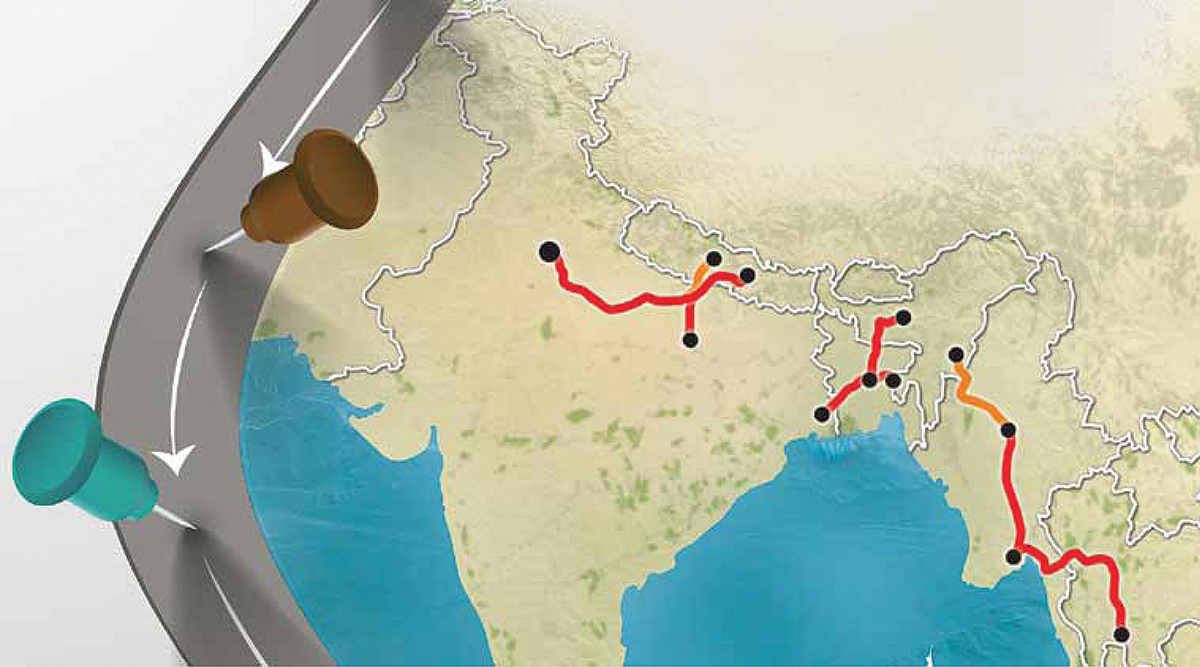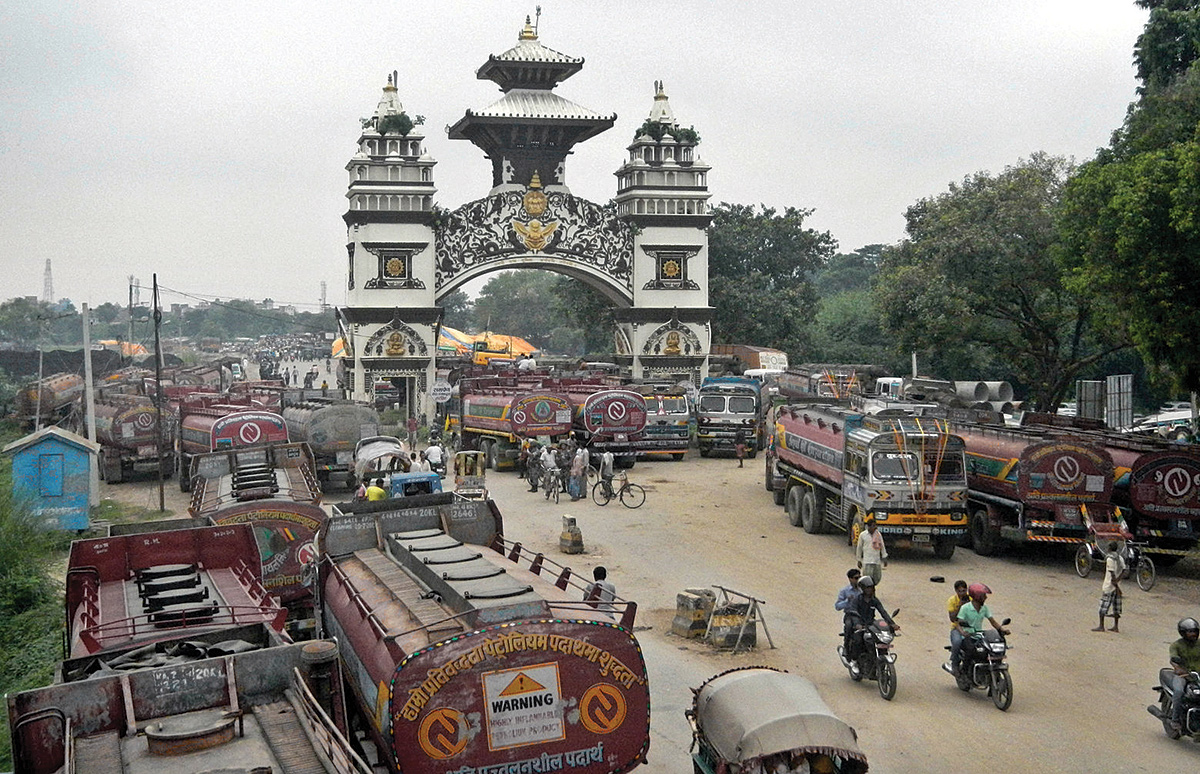
I recall the days of yore when my father recounted the story of how some of the people in our village migrated to Assam, India and then to Burma for better economic opportunities, life and living. The young people of the hills dreaming of shaping their destiny abroad had to follow an arduous journey that required days of climbing through unsavory trails among high mountains; then walk down to the river basin and again climb up… crossing numerous mountains and rivers to reach the plains of the Terai covered with tropical forests and hot and humid climate. Crossing the rivers was risky as the high gradient, high current flow of water would often sweep away human life mercilessly in the absence of bridges and manmade structures to reach the other side safely. After two days of walking through the thick tropical jungles in fear of being attacked by tiger, rhino, wild elephants or snakes, the caravan of people could finally arrive at the railway station in Bihar from where they would start the onward journey towards North East India.
Some people chose to settle in Assam or Meghalaya clearing the forests and starting agricultural cultivation and animal farming. Some travelled further east to Myanmar and even to Thailand in a bid to explore better opportunities. Some Gurkha soldiers who fought during the WWII also chose to settle in Assam and Myanmar after the war was over. It is estimated that the people of Nepalese origin are now almost half a million in Myanmar and 100,000 in Thailand. There was an anecdote about a person named Jibanath in the village whose father left behind his young wife and new born son in the hills to settle in the outskirts of Bangkok and never being able to return home to his family.
When I heard such stories at a very young age, I used to wonder about the courage and mobility of the hill people. It was hard to imagine the arduous and life threatening journey our ancestors made to reach far flung places in those times which we can now make on a few hours flight in comfort from Kathmandu.
Linking South East Asia with South Asia through surface transport still remains a challenge. Countries in the region are making a dent in development of modern transport infrastructures including highways, railways, inland waterways and maritime shipping. But, these infrastructures are being developed in isolation; not connected across the borders. Border crossings for goods and people during those times were easier but it was made more difficult in the course of time under the pretension of political and security imperatives. During the British Raj and before it was easier to travel through the 2500 km long Grand Trunk road that traversed through Kabul-Rawalpindi-Lahore-Delhi-Kolkata-Dhaka and Chittagong connecting the current four countries through a single transport chain. This also provided opportunities to link these countries with countries in South East Asia, particularly Myanmar and Thailand. This chain was disconnected with the partition of India in 1947 and countries were rather confined within their cocoon of domestic transport network with little attention to outward orientation.
Efforts to reconnect the two regions of Asia were started with the Look East Policy of India and Look West Policy of Thailand that gave rise to the formation of BIMSTEC economic bloc in 1997. This inter-regional group initially comprised of five members, became a group of seven with the entry of Bhutan and Nepal in 2004.
The regional group has imbedded 14 areas of cooperation that extends from trade and investment to agriculture, fisheries and climate change. But the implementation of these components is slow and unsteady. Connectivity is the most pressing need in order to enhance trade and investment linkages including cooperation in other areas of economies. Looked at from this perspective, this inter regional set up at first instance, lacks appropriate transport infrastructure in the border lands in order to achieve efficiency and enhance mutually beneficial exchanges. Secondly, institutional infrastructures are not in place to enable cooperation, coordination and enhanced economic integration. Efforts under the regional economic group till date are confined to study for transport infrastructures and logistics, done in 2007 and reviewed and updated in 2014. No concrete implementable actions are yet visible on the ground.
The signing of sub regional motor vehicle agreement among the four countries in South Asia namely Bangladesh, Bhutan, India and Nepal has provided a fresh impetus to the concept of inter regional connectivity between South and South East Asia. The effort of sub regional cooperation in the transport sector may be leveraged to enhance cooperation in tourism, investment and services; also increasing opportunities to link with other contiguous countries outside the sub region. It is imminent that Nepal, Bhutan and Bangladesh can benefit from the proposed tri lateral highway project undertaken by India, Myanmar and Thailand if extra-regional orientation could be flagged off to the sub-regional motor vehicle agreement.
The work program on development of transport network under Asian Highway and Trans Asian Railways are also important in connecting the populous region of South Asia with South East Asia and further to the far-East. Nepal as a landlocked country is well prepared to collaborate with development partners in order to strengthen and upgrade the existing transport infrastructures within the country that would help to link the national transport system with the Asian highways and railways network. Indeed, two sections of Asian Highways pass through Nepal; AH-2 and AH-42 - with a total road length of 1324 kms. But, these highways are not up to the standard; of the total length, 1307 km are under Class III and remaining even below this. This shows imperatives of upgrading the existing infrastructures in order to enable them to carry out international trade traffic.
Creating effective linkages of transport network also require integration of various modes of transport in a multi modal fashion. Such a transport network can be enhanced by developing physical linkages between various ports; seaports to dry ports and container freight stations by means of road, rail and by inland waterways transportation. Hence, there is a need of re-orientation of BBIN Motor Vehicle Agreement in terms of making it outward looking connecting South East Asia, infusing the element of trade facilitation through enhancing cooperation between customs and regulatory agencies. Similarly, facilitation of business visa and people to people contact are important elements for enhancing cross border flow of trade and investment. The development of information and communication technologies in recent decades has provided unique opportunities to reinforce such meaningful collaboration. Countries belonging to BBIN groups can make it happen with greater political will and determination that gives an opportunity of shared prosperity to the people in the sub region and beyond.
 Purushottam Ojha is a former Commerce Secretary. He is now a consultant at the World Bank.
Purushottam Ojha is a former Commerce Secretary. He is now a consultant at the World Bank.
Published Date: June 23, 2017, 12:00 am
Post Comment
E-Magazine
RELATED Economy




